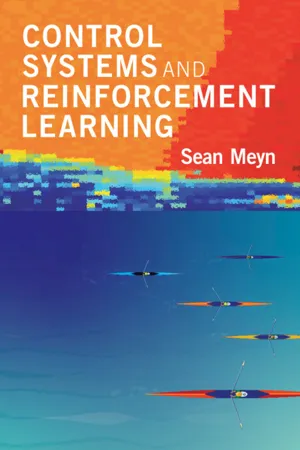Control Systems and Reinforcement Learning
About this book
A high school student can create deep Q-learning code to control her robot, without any understanding of the meaning of 'deep' or 'Q', or why the code sometimes fails. This book is designed to explain the science behind reinforcement learning and optimal control in a way that is accessible to students with a background in calculus and matrix algebra. A unique focus is algorithm design to obtain the fastest possible speed of convergence for learning algorithms, along with insight into why reinforcement learning sometimes fails. Advanced stochastic process theory is avoided at the start by substituting random exploration with more intuitive deterministic probing for learning. Once these ideas are understood, it is not difficult to master techniques rooted in stochastic control. These topics are covered in the second part of the book, starting with Markov chain theory and ending with a fresh look at actor-critic methods for reinforcement learning.
Frequently asked questions
- Essential is ideal for learners and professionals who enjoy exploring a wide range of subjects. Access the Essential Library with 800,000+ trusted titles and best-sellers across business, personal growth, and the humanities. Includes unlimited reading time and Standard Read Aloud voice.
- Complete: Perfect for advanced learners and researchers needing full, unrestricted access. Unlock 1.4M+ books across hundreds of subjects, including academic and specialized titles. The Complete Plan also includes advanced features like Premium Read Aloud and Research Assistant.
Please note we cannot support devices running on iOS 13 and Android 7 or earlier. Learn more about using the app.
Information
Table of contents
- Cover
- Half-title
- Title page
- Copyright information
- Dedication
- Contents
- Preface
- 1 Introduction
- Part I Fundamentals without Noise
- Part II Reinforcement Learning and Stochastic Control
- Appendices
- References
- Glossary of Symbols and Acronyms
- Index
